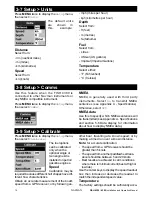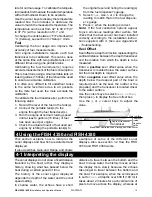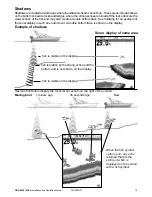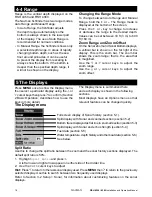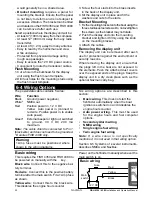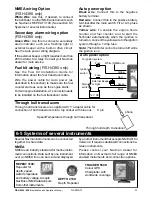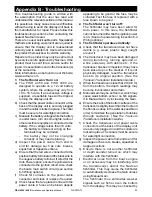
FISH 4350 / 4380
Installation and Operation Manual
25
NAVMAN
This troubleshooting guide is written with
the assumption that the user has read and
understood the relevant sections in this manual.
It is possible in many cases to solve dif
Þ
culties
without having to send the display unit back to
the manufacturer for repair. Please follow this
troubleshooting section before contacting the
nearest Navman dealer.
There are no user serviceable parts. Specialized
methods and testing equipment are required to
ensure that the display unit is reassembled
correctly and is waterproof. Users who service
the product themselves will void the warranty.
Repairs to the product may only be carried out
by a service centre approved by Navman. If the
product must be sent into a service centre for
repair, it is essential to send in the transducer(s)
at the same time.
More information can be found on our Website:
www.navman.com.
1. The
Þ
sh
Þ
nder won’t turn on:
a) The FISH 4350 and FISH 4380 are
designed to operate on a 12 volt battery
system, where the voltage may vary from
10 to 16.5 volts. If an excessive voltage is
supplied, a resettable fuse will be tripped,
turning the display unit off.
b) Check that the power cable connector at the
back of the display unit is securely plugged
in and the collar is locked in place. The collar
must be secure for watertight connection.
c) Measure the battery voltage while the battery
is under load - turn on some lights, radio or
other electrical equipment connected to the
battery. If the voltage is less than 10 volts:
- the battery terminals or wiring on the
terminals may be corroded.
- the battery may not be charging
correctly or may need replacing.
d) Inspect the power cable from end to
end for damage such as cuts, breaks,
squashed or trapped sections.
e) Ensure that the red wire is connected to the
positive battery terminal and the black wire to
the negative battery terminal. If wired for the
Auto Power option, ensure the yellow wire is
connected to the ignition circuit. Also check
the boat’s main switch circuit (see section
6-5 Wiring options).
f) Check for corrosion on the power cable
connector and clean or replace if required.
g) Check fuses that are placed in line with the
power cable. A fuse can be blown despite
Appendix B - Troubleshooting
appearing to be good or the fuse may be
corroded. Test the fuse or replace it with a
fuse known to be good.
2. The
Þ
sh
Þ
nder won’t turn off:
The
Þ
sh
Þ
nder may have been wired for
Auto power. In this case, the fishfinder
cannot be turned off while the ignition power
is on. (See Auto power wiring in section 6-4
Wiring options.)
3. The
Þ
sh
Þ
nder operates erratically:
a) Check that the transducer does not have
debris (e.g. weed, plastic bag) caught
around it.
b) The transducer may have been damaged
during launching, running aground or
while underway with debris etc. If the
transducer has been impacted, it may have
been kicked up on the bracket. If it is not
physically damaged, reset the transducer
back to its original position. (See the
Transom Transducer Installation Guide
.)
c) When the transducer is less that 2 ft (0.6 m)
from the bottom, the depth readings may
become inconsistent and erratic.
d) Manual Gain may be set too low, which may
cause weak bottom echo or no
Þ
sh signals.
If in Manual Gain, try increasing the Gain.
e) Ensure the back of the bottom surface of the
transducer is slightly lower than the front and
the front is as deep in the water as possible in
order to minimize the generation of bubbles
through cavitation. (See the
Transom
Transducers Installation Guide
.)
f) Check the transducer and power cable
connectors at the back of the display unit
are securely plugged in and the collars are
locked in place. The collars must be secure
for watertight connection.
g) Inspect the power cable from end to end for
damage such as cuts, breaks, squashed or
trapped sections.
h) Ensure there is not another fishfinder
or depth sounder turned on, which may
interfere with this
Þ
sh
Þ
nder.
i) Electrical noise from the boat’s engine
or an accessory may be interfering with
the transducer(s) and/or the Navman
Þ
sh
Þ
nder. This may cause the
Þ
sh
Þ
nder
to automatically decrease the Gain unless
using Manual Gain.
The fishfinder thus eliminates weaker
signals such as
Þ
sh or even the bottom
from the display. This may be checked by


